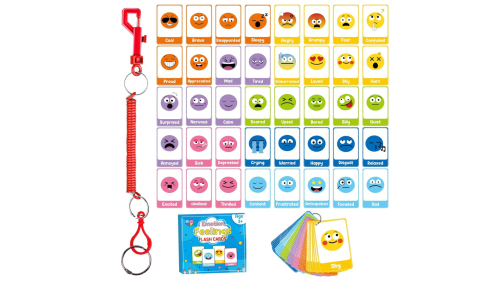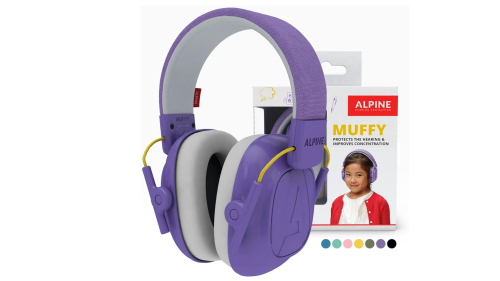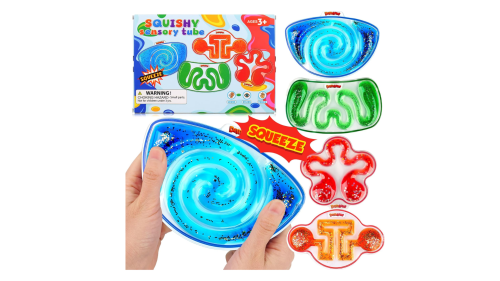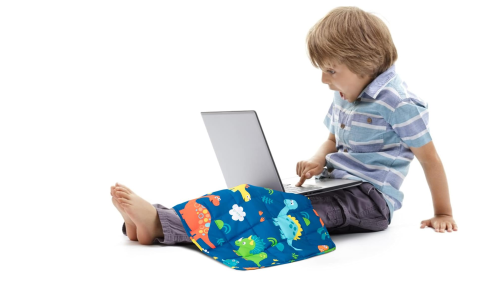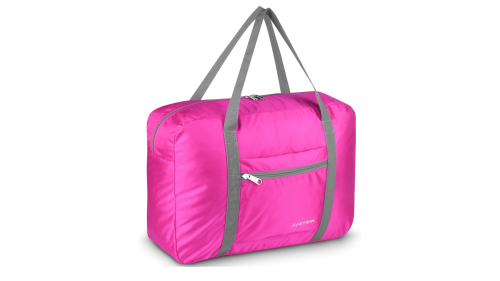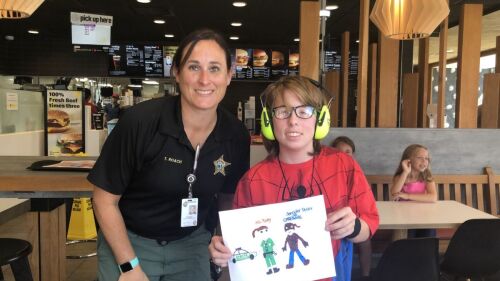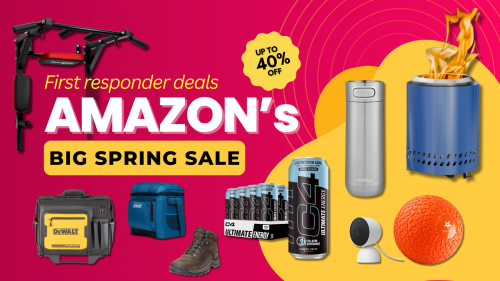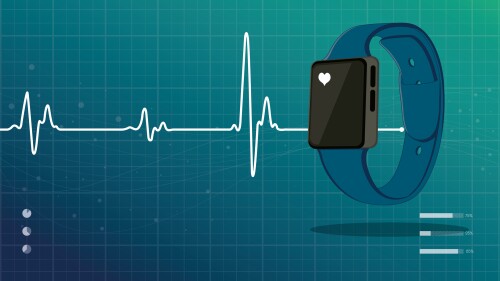As first responders, we pride ourselves on being prepared for every situation. Yet, when responding to calls involving individuals on the autism spectrum, those with communication challenges, or even young children who are nonverbal, the traditional tools at our disposal may not be enough.
Sensory-friendly kits provide a simple, effective way to bridge the communication gap, reduce stress and improve outcomes for these interactions.
Why sensory kits matter
According to the CDC, about 1 in 31 children in the U.S. are diagnosed with autism spectrum disorder (ASD). Add to that the adults with ASD, individuals with PTSD, ADHD, traumatic brain injuries, or dementia, and the number of people who may struggle to communicate effectively in high-stress situations grows significantly. For first responders, encountering these individuals on a call for service is not rare.
In such moments, sensory-friendly kits can be game-changers. These kits contain tools like fidget items for calming and grounding, noise-dampening headphones to reduce overwhelming environmental stimuli, and visual aids like feelings thermometers or emotion cards to facilitate communication when words fail. By offering a way to connect and comfort individuals during these critical times, sensory kits can de-escalate potentially volatile situations and foster trust with the community. I have a beloved family member who is non-verbal, and I worry what could happen if they were ever to get lost or need help. A kit like this can be the reason for a successful resolution.
| RELATED: Sensory bags help Ind. first responders better aid special needs patients
What to include in your sensory kit
Here are some recommended items for building a sensory-friendly kit, including links to specific products available on Amazon:
These plastic, waterproof cards come on a ring to prevent them from getting lost and are perfect for nonverbal individuals to express their needs or emotions.
Designed for children with sensory challenges, these adjustable and comfortable headphones reduce external noise by 25dB to help with sensory overload.
A 4-pack of maze-style fidget toys that provide tactile stimulation and help individuals calm down during stressful situations.
This lap pad provides a calming and grounding sensation, making it a great tool for individuals who benefit from deep-pressure input.
This timer helps individuals manage time without auditory stress, as its volume can be lowered to avoid startling noises when it goes off.
A variety of small sensory items that offer tactile, visual, and calming benefits, suitable for kids and adults alike.
This keychain provides soothing visual stimulation and takes up minimal space, making it a convenient addition to any kit.
Use a bright, kid-friendly waterproof bag or container, such as this one by Fetivin, to make the kit easy to locate and distinguish from other gear. Pick a color that makes it stand out from your regular work bags, because I know they are all black or red. 😊 Make it easy to spot!
Cost vs. benefit
Understandably, some departments may hesitate to allocate funds for equipping every officer with a sensory kit. However, the benefits far outweigh the costs. Each kit can be assembled for as little as $50-$75. If outfitting all officers is cost-prohibitive, a practical solution is to assign sensory kits to field training officers (FTOs) or sergeants, ensuring they are available when needed.
Real-world impact of sensory kits
Departments that have implemented sensory kits have reported improved interactions and outcomes. Responders gain confidence in their ability to handle unique situations, and community members feel seen and supported. These kits are especially useful during interactions with nonverbal young children, such as when a lost child is found and cannot communicate.
Investing in sensory-friendly kits is about ensuring every officer is prepared to serve all members of the community effectively. With the tools to de-escalate situations and connect with individuals in need, we can make a meaningful difference. By starting small — whether piloting kits with FTOs or equipping patrol vehicles — we can take a step toward creating a safer and more inclusive environment for everyone.
Additional considerations for the implementation of sensory kits
Responder training
Training is key to using sensory-friendly kits effectively. Officers should understand autism and sensory challenges, learning how to approach and interact with individuals who have communication difficulties or sensory sensitivities. Partnering with organizations or local autism advocacy groups can provide invaluable training and resources to ensure officers feel confident and prepared.
Community partnerships
Building sensory-friendly kits doesn’t have to be a solo endeavor for a department. Collaborating with local businesses, schools, or advocacy groups can help fundraise or assemble kits. Autism organizations or parent groups might donate supplies, sponsor a kit program, or assist in educating the community about the initiative. Partnerships strengthen community ties and provide much-needed support for this important cause.
Feedback from officers and community members
Departments should establish a feedback loop to refine sensory kits over time. Officers can report which items are most helpful in the field, while community members can provide insights into additional needs or suggest improvements. This approach ensures the kits remain practical and effective.
Tracking usage and impact
Tracking when and how kits are used provides data to highlight their effectiveness. This data can be instrumental in advocating for additional funding or expanding the program. It also demonstrates to the community that the department is taking actionable steps to support individuals with sensory or communication needs.
Cultural sensitivity
In diverse communities, sensory kits should reflect cultural awareness. Ensure communication tools include images or terms applicable to various backgrounds, making them inclusive and effective for everyone the department serves.
These additional considerations can help departments optimize sensory-friendly kits and their implementation, ensuring they are as impactful as possible.
Having the appropriate range of tools and training helps guarantee the best outcome for all parties
January 28, 2021 10:03 AM
·
Discounts available for Military, First Responders, and Government Employees.
Save 10% off shoes and sneakers, clothing, and accessories.
Save up to 10% off hollow-point coffee.
Save up to 20% off coffee roasters and accessories.
Save up to 25% off men’s training gear, tactical shorts.
Save 40% off sunglasses and safety glasses.
Save 10% off gas grills and accessories.
Save up to 10% off molded car door protectors.
Save 15% off travel bags, backpacks, duffels, golf and pickleball gear.
Save 15% off silicone bands and silicone engagement rings.
Save 25% off music, sports, talk and podcasts, live and on demand.
Save up to 18% off engagement rings, meteorite rings, wedding bands and accessories.
Save up to 15% off polos, headcovers, hats and tees.
Save up to 20% off pet lovers, coffee lovers, military and blue line supporters, hunting, fishing and outdoor.
Save up to 20% off quartz pocket watches, pendant watches, dual time zone watches.
Save 20% off 100 and 200 level tickets.
Save 15% off golf clubs, golf balls and gear.
Save up to 5% off barbells bumper plates, benches, power racks, kettlebells, squat racks, slam balls.
Save up to 10% off bourbon glass candles, apparel, and hygiene products.
Save up to 5% off roof top tents and overlanding accessories.
Save 20% off affordable sunglasses and accessories.
Save up to 10% off supplements, glucosamine for dogs and cats.
Save 15% off workout supplies. All products are made in the USA.
Save up to 10% off boutique men’s Swiss watches, straps, and accessories.
Save 20% off tools, trimmers and blades, groin, beard and face, apparel, and accessories.
Save 15% off backpacks, totes, and accessories.
Save up to 10% off truck tailgate net, cargo net, warehouse rack net and accessories.
Save 15% off tactical dog collars, large breed dog collars.
Save 10% off e-bikes, parts, and upgrades.
Save to 35% off multivitamins supplements and health tests.
Two Timekettle devices went through real-world patrol and interview tests — one might earn a spot in your gear bag
April 21, 2025 09:28 PM
·
Follow this expert guide to cleaning, conditioning and polishing your police boots, belts and gear the right way
Explore top self-defense tools like TASERs, pepper spray and personal alarms. Learn how to choose, use, and store them safely and legally
April 14, 2025 10:15 AM
·
The habit? Working out with your dog in ways that support movement, recovery and routine
April 09, 2025 07:57 PM
·
The uniform doesn’t come with a manual for pet ownership — this might help
April 09, 2025 06:40 PM
·
From gritty police procedurals to cult cop comedies, these cop movies have earned their place in cinematic history
April 09, 2025 03:00 PM
·
From space-saving home finds to thoughtful everyday essentials, here’s what caught our team’s attention in March
April 04, 2025 10:53 AM
·
Ready to upgrade your fireams gear? Explore top-selling range bags and pistol cases built for performance, durability and mission-specific needs
March 27, 2025 04:37 PM
·
Don’t hit the range unprepared — use this guide to stock your range bag with mission-critical tools
March 26, 2025 09:20 PM
·
Save up to 40% off on Nest, Coleman, DEWALT, CRAFTSMAN, Contigo, Ninja, Cuisinart & more
March 25, 2025 08:00 AM
·
Tired of aching feet? A veteran officer shares expert-backed solutions to keep you moving, stay pain-free and perform at your best
March 20, 2025 02:14 PM
·
Short on time and space? Check out these products to help get a workout in no matter where you are in your day
March 12, 2025 02:19 PM
·
Many merchants offer special discounts to LEOs as a “thank you” for their service
Hit your fitness goals without breaking the bank
March 11, 2025 02:49 PM
·
Using an online tax preparation service or working with a public safety tax preparation expert might save you time and money. Here’s what to know.
March 07, 2025 12:28 PM
·



